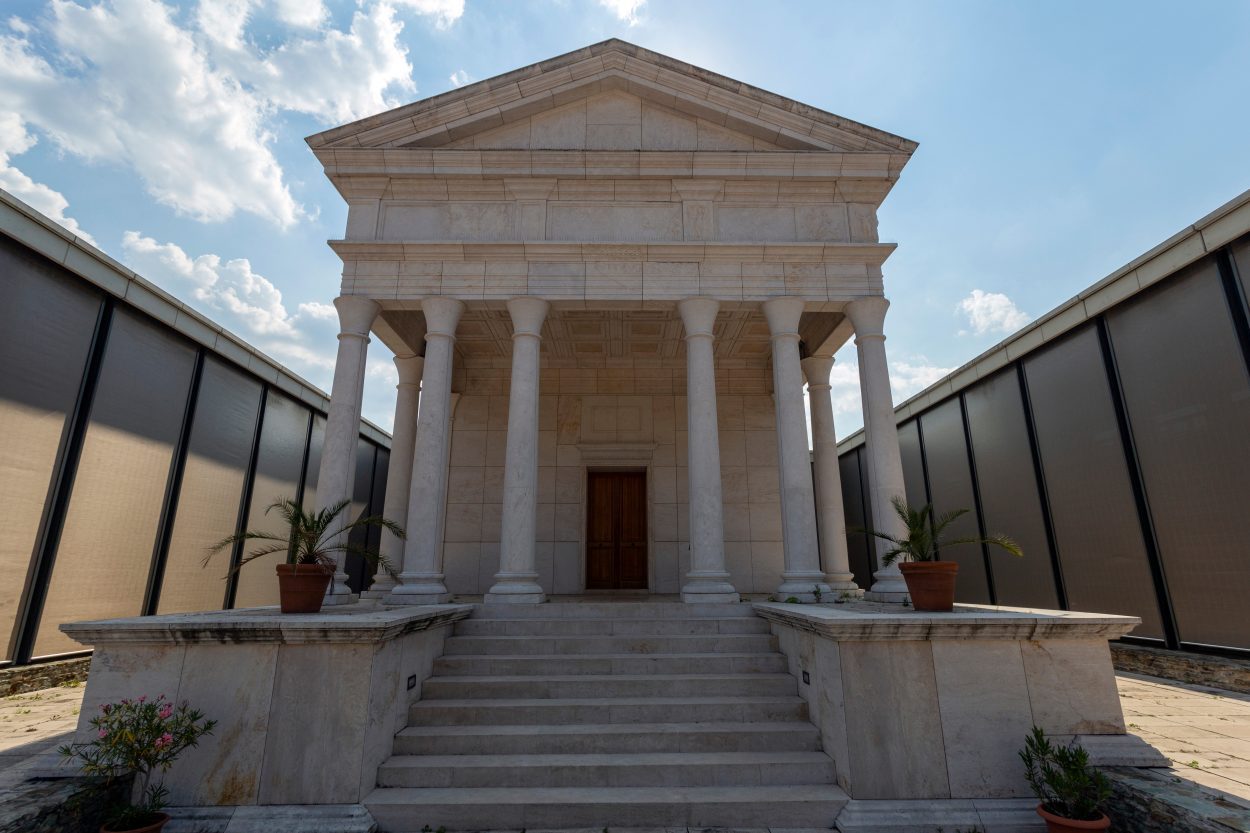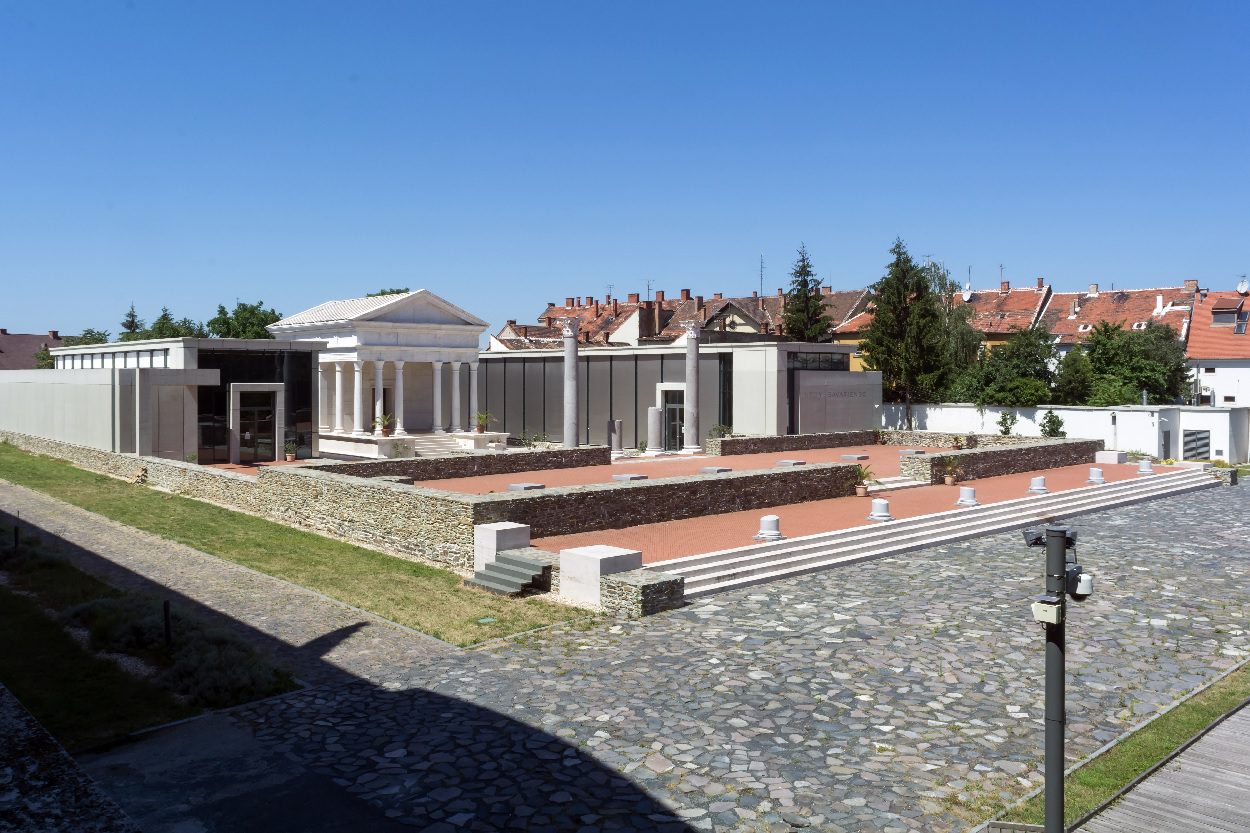The Iseum Savariense, also known as the Isis Szentély Romkertje, is a Roman temple dedicated to the goddess Isis, located in Szombathely, Hungary.
Isis was an Ancient Egyptian goddess, first mentioned in the Old Kingdom (2700 BC to 2200 BC) as one of the main characters of the Osiris myth. According to legend, she resurrected Osiris and gave birth to his heir, Horus.
Worship of Isis spread during the Greco-Roman world after the Roman annexation of Hellenistic Egypt. Although a religious minority, the cult of Isis established temples in many parts of the Roman Empire, even reaching Londinium in Britannia and the temple of Iseum Savariense in Pannonia.

During Roman times, Szombathely was known as Savaria, a colony founded by Emperor Claudius in AD 50. The town functioned as the procuratorial seat of Pannonia to administrate the province and collect taxes.
During the 2nd century BC, the Iseum Savariense was constructed outside the town walls, the third largest Roman temple dedicated to Isis (the larger being in Rome and Alexandria). The temple remained in use until the 4th century AD, likely due to the rise of Christianity across the Roman Empire and a decree by Theodosius forbade which banned all pagan worship.
The temple was first discovered in the 1950’s, revealing reliefs and fragments of cult statues depicting Serapis, Amor and Psyche, in addition to traces of the temple façade that allowed archaeologists to reconstruct the ancient building.
In the Ruin Garden are traces of a sanctuary dedicated to Mercurius (Mercury), an eight-angled bath and the original cobbles from the Amber Road that once connected Savaria to the Baltic Sea and Mediterranean.
Nearby are the ruins of other temples of deities, such as Juppiter Dolichenus, one of the so-called ‘oriental’ gods; that is Roman re-inventions of ostensibly foreign figures in order to give their cults legitimacy and to distinguish them from the cults of the traditional Roman gods.
Header Image Credit : Shutterstock







